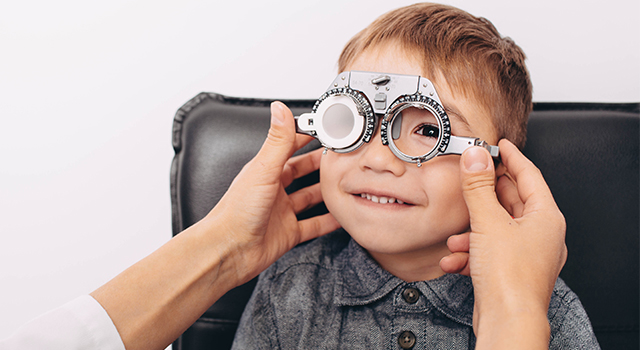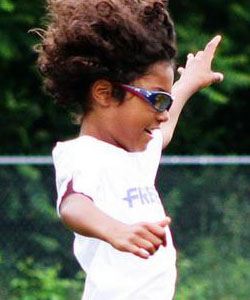Autism is a growing concern around the world, with autism rates more than doubling in the United States since 2004.
Autism can impact a child’s vision
Autism Spectrum Disorder (ASD) is a group of developmental conditions that can cause social, behavioral and emotional issues.
According to the Centers for Disease Control and Prevention (CDC), autism tends to be more prevalent in boys than in girls, and affects roughly 1 out of every 44 children.
Common symptoms of autism include:
- Language delays
- Trouble adapting to a new routine
- Difficulty making eye contact
- Repetitive actions
- Avoiding touch or physical affection
- Problems relating to other people
Along with some of the more well-known signs of autism, people with ASD may also have problems with their vision.
Studies show that children with ASD are 50% more likely to develop vision problems.
Signs of vision problems in children with ASD
Although it is important for everyone to have regular yearly comprehensive eye exams, this is especially true for children with autism.
Signs related to visual dysfunctions are easily mistaken for autism symptoms, so visual problems may go undetected and untreated.
Some behaviors displayed by those with ASD, that may point to vision-related problems, include:
- Flapping fingers in front of eyes (known as visual stimming)
- Looking beyond/through objects
- Poor eye contact
- Rolling eyes
- Sensitivity to light
- Showing either little/no fear of heights or an excessive fear of heights
- Turning the head to look at objects from the side of the eyes instead of head-on
SEE RELATED: How Does Vision Therapy Help Children with Autism?
If you notice these signs above, schedule an appointment for your child for a functional eye exam with an eye doctor near you.
Eye exams for children with ASD
During a child’s exam, your eye doctor will assess your child for:
1. Eye movement disorders
These are disorders that can negatively affect the accurate and smooth movement of the eyes in unison, making it difficult for the eyes to gather consistent visual information for the brain to interpret.
The most common disorder of this type in people with ASD is strabismus, a condition where the eyes do not point in the same direction.
2. Eye tracking problems
These issues make it difficult for the eyes to track moving objects. Such problems may be the reason a person with autism prefers to view objects with their peripheral vision rather than looking straight at them to view them.
3. Binocular vision problems
Binocular vision refers to the eyes’ ability to work together to collect visual information to be sent to the brain for interpretation.
Children with ASD are often affected by a binocular vision issue known as convergence insufficiency (CI).
CI is an inability of the eyes to converge properly on an object close-up. This can cause problems when attempting to read or write, including headaches, blurry vision and difficulty focusing for long periods of time.
If your eye doctor finds these or other vision problems, they may recommend vision therapy.
How vision therapy helps
Vision therapy is an evidence-based, doctor-prescribed regimen of in-office and at-home eye exercises aimed at improving the connection and coordination between the eyes and brain.
Your eye doctor may choose to supplement these eye exercises with vision therapy aids such as Wolff Wands, prism glasses and balance boards.
A customized vision therapy regimen for a person with autism will work on improving visual processing to help them understand and interact with their surroundings more comfortably. This will help lower anxiety and allow them to more successfully socialize and verbalize their needs to others.
Some specific visual skills that these vision therapy regimens may emphasize for improvement may include:
- Focusing and convergence
- Visual-spatial organization
- Eye-tracking
- 3D and depth perception
- Visual information processing
It usually takes between 4 to 6 months for vision therapy to be fully effective, assuming a schedule of 2 hour-long sessions per week.
LEARN MORE: Vision for Special Needs
If your child has ASD, a comprehensive eye exam with an eye doctor near you is vital to give them the best opportunities.
Studies show that children with ASD are up to a 50% higher risk to develop vision problems.
If your child has ASD an eye doctor may be able to provide solutions to improve their enjoyment of life.


